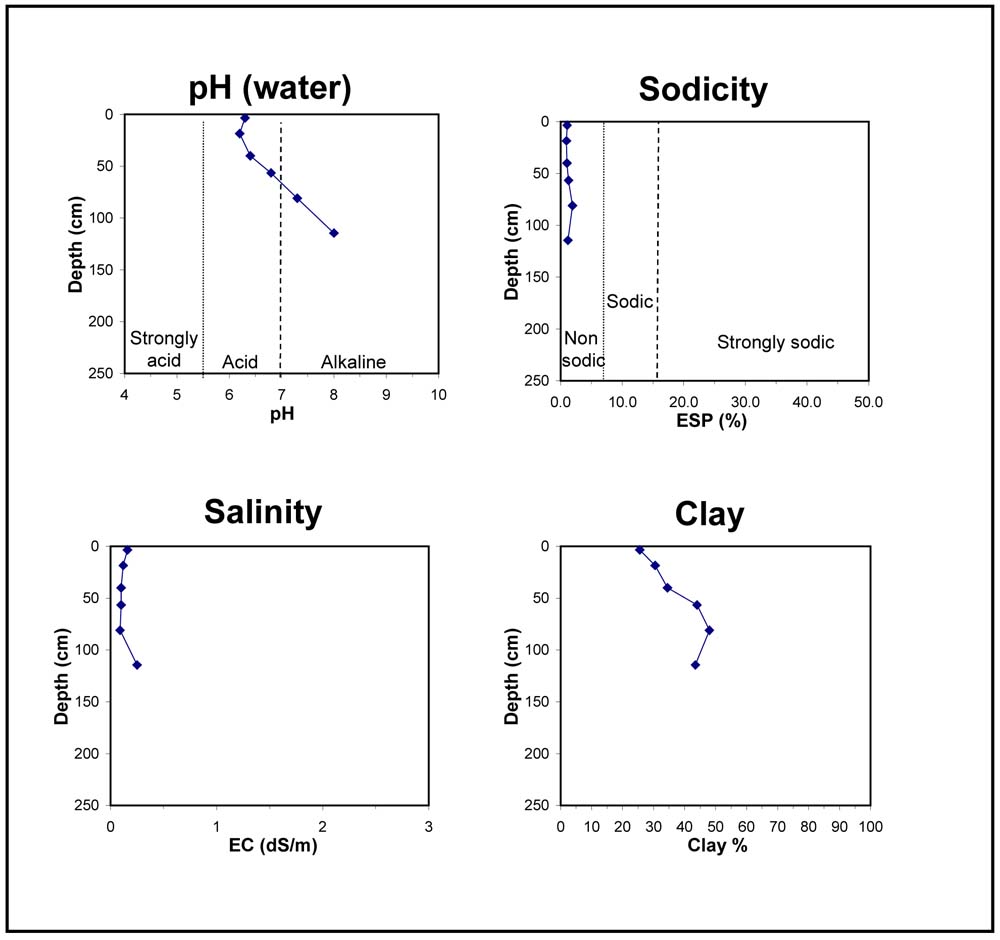GL98
Location: Casterton
Australian Soil Classification: Ferric, Petrocalcic, Black DERMOSOL
General Landscape Description: Level plain
Site Description: Flat
Land Unit: Marl
Geology: Tertiary marl
General Land Unit Description: This land unit is a complex consisting of mainly gently undulating to level plains with numerous small depressions. In the more undulating portion of the unit, the very slight rises with broad level crests have soils consisting of Dermosols (GL98) or Chromosols (GL70). The soils are variable, some soils have soft carbonate nodules at depth, some have ferruginous nodules and some exhibit vertic (cracking) characteristics. There are also minor occurrences of sand hills and dunes consisting of deep, uniform sands (Tenosols, Podosols). The numerous small depressions are commonly alkaline grey or black cracking clays (Vertosols). A minor soil type in some depressions are acidic black cracking clays (Vertosols) and some shallow soils. The soils in the western portion of the land unit tend to have poorer internal drainage than soils of the eastern zone. The major restriction for land use is the poor internal drainage and the variable soils within a short distance. This soil type is used as the major soil type representing this complex unit. It is located on the plains.

Soil Profile Morphology
| A1 | 0-10 cm | Black (10YR2/1) loam, weak fine subangular blocky structure; strong consistence, dry, pH 6.3; changes to:
|
| A3 | 10-30 cm | Black (10YR2/1) clay loam, weak medium subangular blocky structure; strong consistence, dry; pH 6.2; changes to:
|
| Subsoil
| ||
| B11 | 30-40 cm | Very dark grey (10YR3/1) light clay, few very faint yellow mottles, weak to massive coarse subangular blocky structure; pH 6.4; changes to:
|
| B12 | 40-80 cm | Very dark greyish brown (2.5Y3/2), with many distinct yellow, orange and black mottles; light clay; weak coarse prismatic structure; pH 6.8; changes to:
|
| B2 | 80-150 cm | Light olive brown (2.5Y5/4) , with many yellow, orange and black mottles; medium clay ; weak fine to very fine subangular blocky structure; abundant ferruginous nodules occurring as a 50 mm layer above clay; contains many organic segregations; a few soft calcium carbonate nodules present; pH 7.3; changes to:
|
| B3 | 150-160 cm | Pale yellow (2.5Y7/4); heavy clay; weak medium angular blocky structure; contains common soft calcium carbonate nodules; pH 8.0. |
Key profile features:
- Ferric horizon
- Alkaline at depth
- Calcium carbonate nodules at depth
- Mottled subsoil

Profile Described By: Natalie Baxter and Grant Boyle, 9th October 2000.


